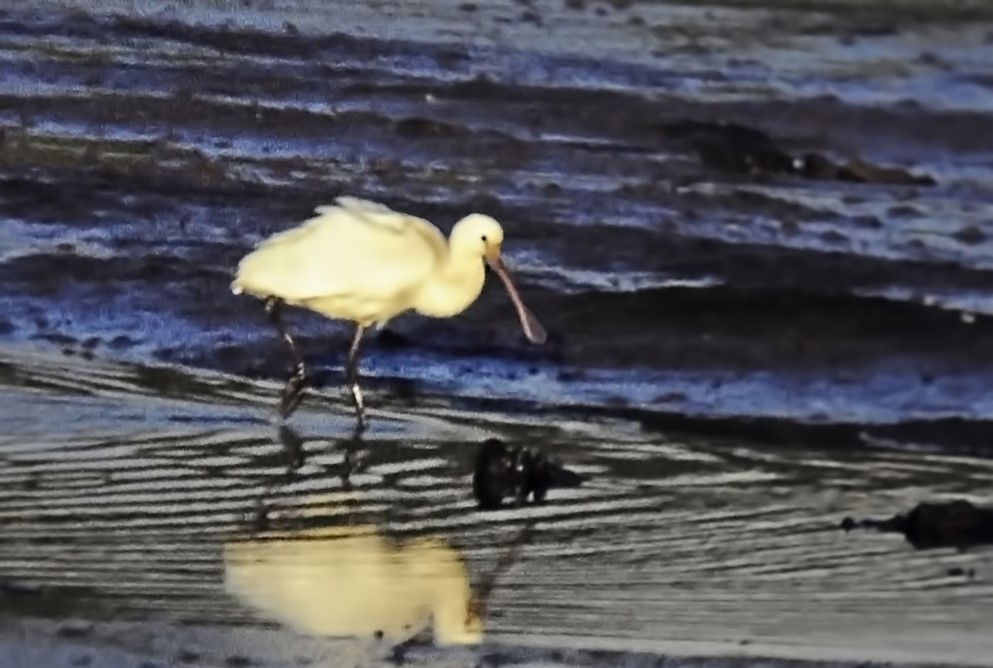Eurasian Spoonbill at Hunterston in 1978
In the days before Global Climate Change was a phrase we all got to know, winters in Ayrshire tended to be cold, wet and dreich affairs (so, what’s changed, I hear you say?). The general pattern of our winter weather was something which people in the south-west of Scotland knew well, and met with the usual resignation. Occasionally, there would be a day when a ridge of high pressure brought slightly colder and sunnier weather, and it was during such a period that an unexpected visitor appeared at Hunterston.
John Burton was a regular visitor to this location, since he lived and worked in the area. A quiet man with a wonderfully understated sense of humour, John was nonetheless a really good birder, frequently reminding colleagues that he had been one of the founding members of the Nuneaton Bird Club. On 8th November 1978 he was down at Hunterston, watching the waders and wildfowl, when a young Eurasian Spoonbill walked into his field of view. This species was, at that time, still a rarity in most of Scotland, especially in the west, and it came as no great surprise that John had just found the first Ayrshire record.
A quick dash home and a phone call to those whom he thought might be interested brought a variety of Ayrshire birders up to the area within the day. The late 1970s was a period when phoning round by landline was really the only way to get the word out – none of this mobile phone stuff, or rare bird websites. Nonetheless, I managed to get there as quickly as possible, and met the “usual people” – Bruce Forrester, David Given, Brian Orr et al – excitedly watching this strange white bird with its odd-shaped beak, working the muddy gullies.
It was a young bird, still having the trademark black tips to its primary feathers, and looked to be in reasonably good health. However, it was very far north of where it really should have been, and winters in Ayrshire could still get a lot colder as the year progressed. This was going to have a serious impact on the bird’s ability to fly further south. It began to move around locally, being occasionally seen on Great Cumbrae, but by 3rd January 1979, it eventually succumbed to a shrinking food supply, and was discovered dead on the beach at Seamill, in an emaciated condition. A sad end to a surprise visitor, but a wee reminder that our weather patterns have changed to the extent that we don’t currently get so many seriously cold spells of winter weather, and we’ve also got a bit more used to the idea that Eurasian Spoonbill could occur a bit more often.

Angus Hogg
20 November 2022